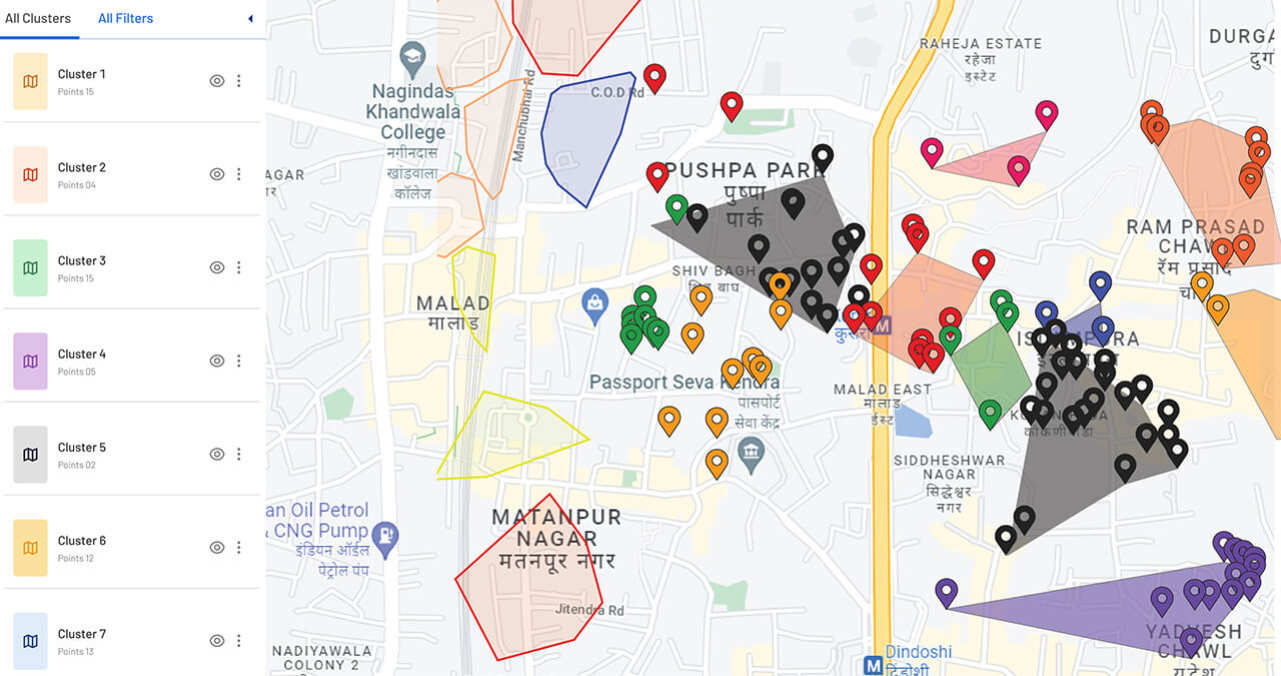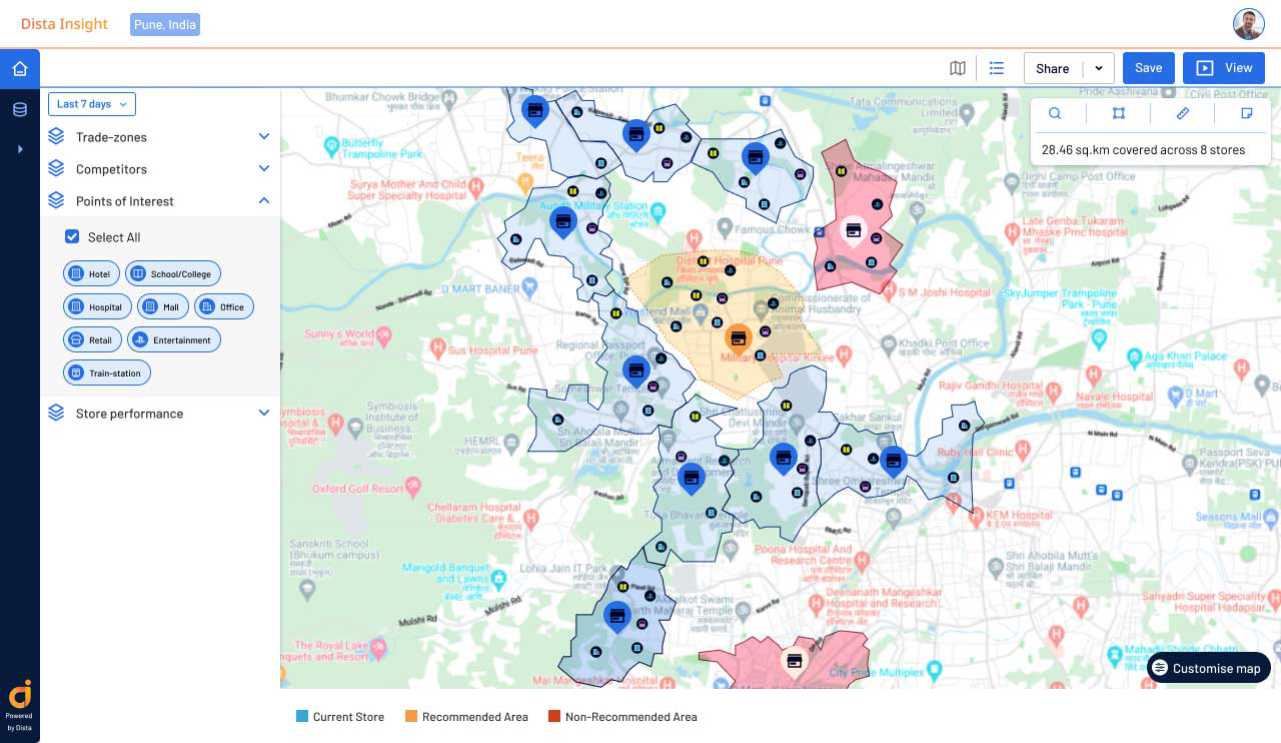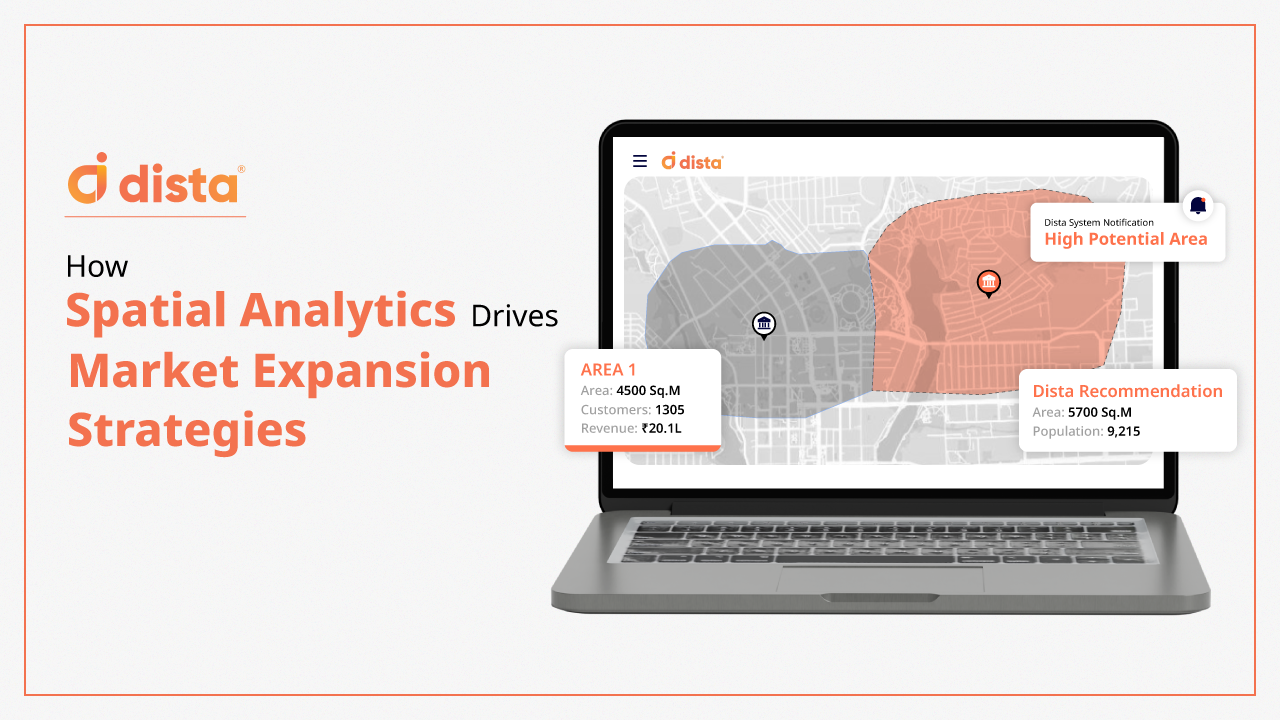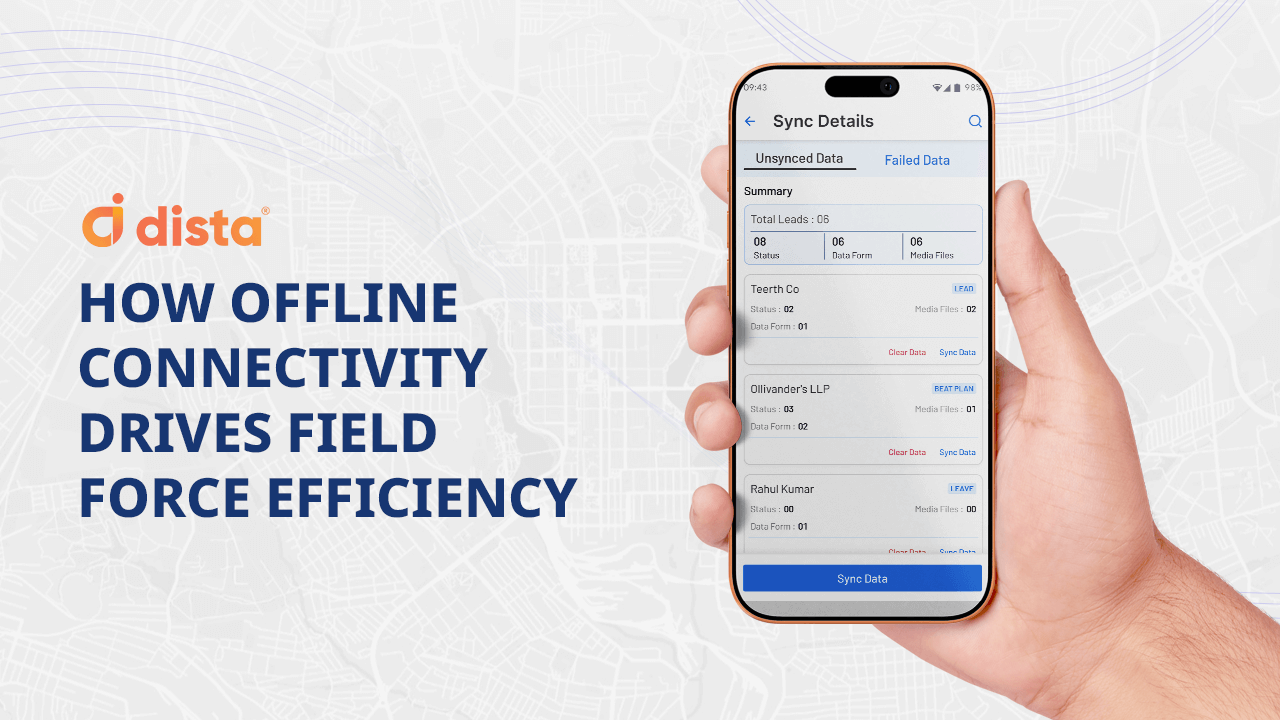Market expansion isn’t just about expanding your business to more locations – it’s about expanding them in the right ones. Yet, a persistent challenge faced by several enterprises across industries like QSR, FMCG, and retail is identifying high-growth areas and white spaces to open new stores, branches, or outlets.
Over 60% of market expansion efforts fail to meet ROI expectations due to poor location decisions, inaccurate demand forecasting, or lack of competitive insight, according to a Bain & Company report.
Burning questions business expansion heads and CXOs ask while designing strategies:
- What’s the best location for our next outlet or distribution center?
- Where are our competitors placed?
- Which areas have high sales potential but low current coverage?
- How large is the addressable market in a specific geography?
- Are we cannibalizing our own stores or territories?
Enterprises have abundant business and location data, however, they lack a system that offers visualization and derives location-based insights from it. That’s where spatial analytics comes in. Geospatial analytics software like Dista Insight offers a 360-degree map-based visualization of fragmented business data that helps carve market expansion strategies.
Key Challenges of Planning Market Expansion
- Identifying high-demand zones where customers are actively placing orders, but no store nearby.
- Evaluating the influence of competitor presence on store or service performance.
- Planning the next store location without a spatial layer limiting visibility into customer demand.
- Recognizing overserved and underserved areas.
- Connecting scattered datasets like, internal metrics, aggregator orders, foot traffic insights – into a centralized dashboard.
Drive Market Expansion with Spatial Analytics
AI-powered geospatial analytics software like Dista Insight combats these challenges by bringing together multiple data layers – business performance, competitor density, customer activity, and geographic context – into one visual analytics platform.
Let’s learn how applying spatial analytics helps businesses.
1. Map-based Visualization
Business leaders can visualize order data from multiple sources like internal systems or external aggregators on a centralized dashboard with a spatial analytics platform. They can filter order data by source, time of day, order value, or location, making it easy to detect hotspots and demand trends.
2. Multi-Layer Geographic Intelligence
The platform integrates open datasets and third-party map data like Google Maps to overlay cities with trade zones, footfall-heavy areas, tourist hubs, and competitor locations. This helps decision-makers spot locations that are active and have high market potential for expansion.

3. Grid-based Benchmarking
The AI-powered system breaks addressable geographic areas in cities into customizable grids, and color codes them based on order density or performance. This grid system reveals which areas are saturated and underserved and how they perform against nearby competitors.
4. Data-Driven Site Selection
Dista Insight empowers leaders to interpret multi-data layers with detailed map-based visualization instead of scrolling through rows of spreadsheets. They can derive spatial trends and patterns to identify high-opportunity zones that lack physical presence. The visualization also helps them spot white spaces and see potential locations to launch, relocate, or close stores/branches/outlets.

Strengthen Market Expansion Strategies with Dista Insight
By adopting a spatial analytics platform like Dista Insight, businesses can shift from reactive to proactive market expansion strategies. With a holistic, location-aware view of operations, they can:
- Optimize store/branch/outlet footprints based on real demand patterns
- Expand into new markets with competitive intelligence
- Reduce the risk of poor site selection or underserved zones
- Allocate resources more efficiently for better customer service
Are you managing a retail chain, a QSR network, or any business with a geographic scale? Get in touch with us to refine and define your market expansion strategy.






